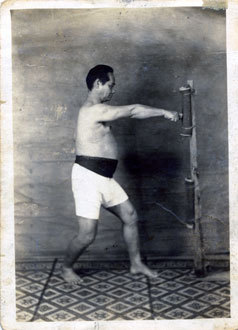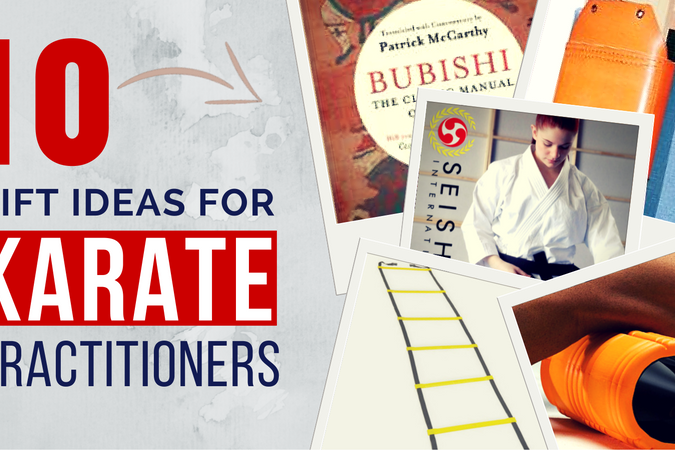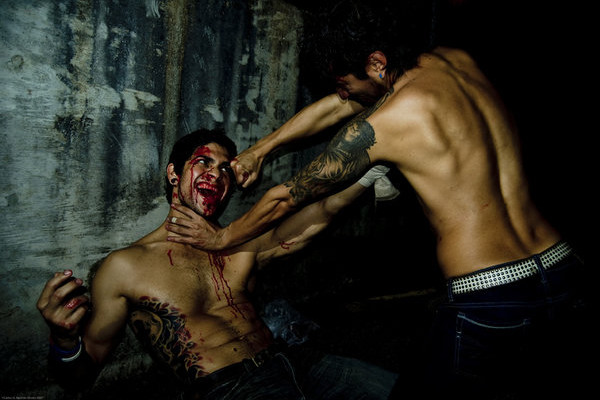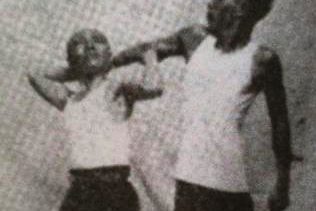Do you know what a koan is?
No?
A koan is a story, dialogue, question or statement which is used in Zen-practice to provoke the “great doubt” and test a student’s understanding of Zen.
Ever read/heard one?
I hope you have.
Because, even though we are no Zen monks, the usage of koan provides good value for Karate students as a lot of insight can be gained from the introspective smash-in-the-nuts that a well-aimed koan always provides.
For instance, a couple of weeks ago I posted a very simple status update on my official KbJ Facebook page, regarding the three K’s that modern Karate practice is often split into.

The status update read:
Kata, kihon or kumite?
That’s it.
Nothing more, nothing less.
I didn’t ask “which one is the best?”
I didn’t ask “which one is more important to train?”
I didn’t even ask “which one do you like the most?”
All I asked was simply: “Kata, kihon or kumite?”
And guess what?
Outrage ensued.
After 50+ comments, varying from the more provocative ones (“kumite is for kids, kihon is for beginners and 99% of people don’t understand kata”) to the more expected ones (“my sensei told me…”), the results were in.
My koan had succeeded.
With flying colors.
Just by asking a simple “kata, kihon or kumite?”, without placing more or less value on any of the three, I had somehow sparked a lot of people’s suppressed opinions about what Real Karate™ should (or should not) look like. As you can see for yourself, people started talking about everything from bunkai to disrespect to technical details to tradition to philosophy.
In other words, established thought patterns were not only being expressed; but also examined, explained and perhaps even silently eradicated.
And that, my friends, is the proverbial power of a well-aimed koan nut-kick.
Karate Nerds™: 1 – McDojos™: 0.
But please believe me: I’m no ignoramus. It would be pretty douchey of me, to say the least, if I didn’t tell you guys what I personally think about the whole “kata, kihon or kumite?” issue.
Well, let me put it this way:
In old-school Karate, there was no such thing as “kata, kihon or kumite”.
There was kiken, kitanai and kitsui.
Look:
#1. Kiken – Dangerous

First of all, old-school Karate was real badass.
I’m talking bad to the bone.
And yes, in the literal “oops, I think I broke a bone in Karate class today”-sense.
You see, the objective of original Okinawan Karate was never to meet new friends, stay in shape, lose weight or have fun. It was to save yourself or your loved ones in a no-holds-barred physical altercation.
So, when you prepared for that in training, you couldn’t just be punching ‘in the air’ all day long or use twenty inches of foam protectors all over your fists and shinbones, could you?
Oh no.
A harsh reality demands that you practice for that harsh reality.
That’s why old-school Karate was incredibly dangerous, and that’s why, subsequently, it also had to be significantly changed when it entered the public school system in Okinawa (mostly thanks to Itosu Anko sensei, the grandfather of modern Karate) in order to provide a safe learning environment.
I mean, hey, if your kids learned how to poke each others eyes out, smash each other unconscious and snap each other’s joints, you wouldn’t want your kids to stay in that school for long, would you?
Back in the Ryukyu Kingdom days, Okinawa – which still is one of the poorest prefectures in Japan – was a place where Karate was used to protect against danger (coincidentally enough, that is actually the real meaning of the “Pinan/Heian” kata names. Go figure.) and therefore regular day-to-day training had to always dance on the edge of danger.
That’s why the first K of old-school Karate is kiken – dangerous.
Next one:
#2. Kitsui – Hard

Now, not only was original Karate dangerous, but it was hard too.
Those two are not synonymous.
(Shooting a gun is dangerous, but not that hard, right?)
Old-school Karate was incredibly taxing – both physically (training was meant to prepare you for reality, remember?), psychologically (endless “shut-up-and-train” repetitions under the watchful eyes of your sensei), socially (training was often conducted at night) as well as economically (training fees consisted of booze, food, chores and sometimes money).
The saying popularized by Funakoshi Gichin, “three years, one kata” (“hitotsu kata, san nen”) pretty much sums it up.
The thing we must remember though, is that Karate was hard for a good reason.
Not everyone was allowed to learn it.
The old masters took their martial arts teaching very seriously, and went to great lengths to avoid showing the deadly arts to the wrong people. Training would begin only after a sensei was pleased with a students character (self-discipline, respect, manners and obediance being top priorities), which is why it was pretty hard for the Average Joe to become a Karate student in ye olde days – where many people thought more about food and shelter than kicking and punching (which is one of the reasons why old-school Karate was never made for/by “peasants”. As you know.)
The fact that original Karate was kitsui – hard – is probably the very reason we’re practising Karate today.
Because if it wasn’t hard, it might have been diluted and died out a long time ago.
And lastly…
#3. Kitanai – Dirty

Old-school Karate wasn’t pretty.
It was messy, unstructured, haphazardly put together and often taught in an incoherent manner.
Just like a real fight.
What worked worked, and what didn’t work was immediately discarded.
It was 110% a process of trial and error.
In fact, the ongoing debate in modern Karate regarding “form vs. function” wasn’t even on the agenda! I mean, probably the last thing you wanted to care about when you were having your face smashed in by fifteen thugs was how your technique looked… right?
Right.
(Granted, there’s a lot to be said for the opposite too, but I’ll leave that for another article).
Old-school Karate was dirty for a reason, just as it was dangerous and hard for a reason. Because in real combat, nothing is ever safe, easy or beautiful by default. Those are your goals, sure. But you cannot start with them in mind.
You need to start from the idea that self-defense is dangerous (kiken), hard (kitsui) and dirty.
- There is no ref.
- There are no rules.
- And there is definitely no guarantee of victory or even help.
The dirtyness, kitanai, of old-school Karate reflects the realities of self-protection to the fullest – where nothing but your own abilities determine if you’ll be eating your breakfast tomorrow with a fork or through a straw.
And you must never be afraid of fighting dirty.
Because fighting dirty is just another way of saying “surviving”.
And that is the only goal we really care about, isn’t it?
Right.
____________
So…
With that being said, here’s my new koan for you guys:
Kiken, kitsui or kitanai?
The 3K of traditional Karate.
Hopefully you’ll know what to answer.
…or not answer.
It’s up to you, my friend.
Karate is what you make it.
Just remember to keep keepin’ it real.



32 Comments